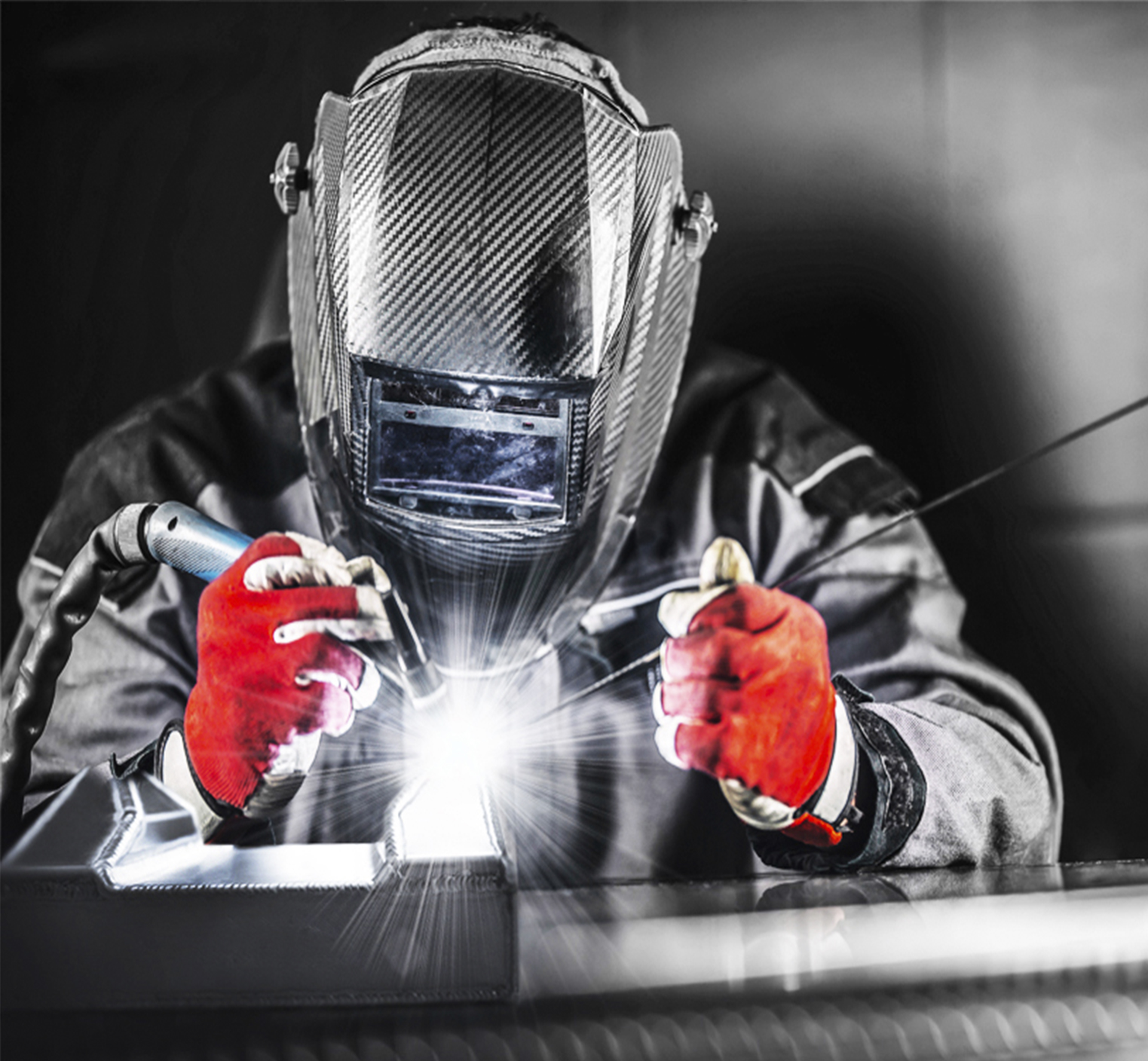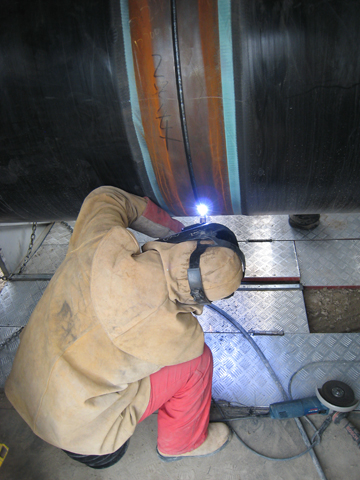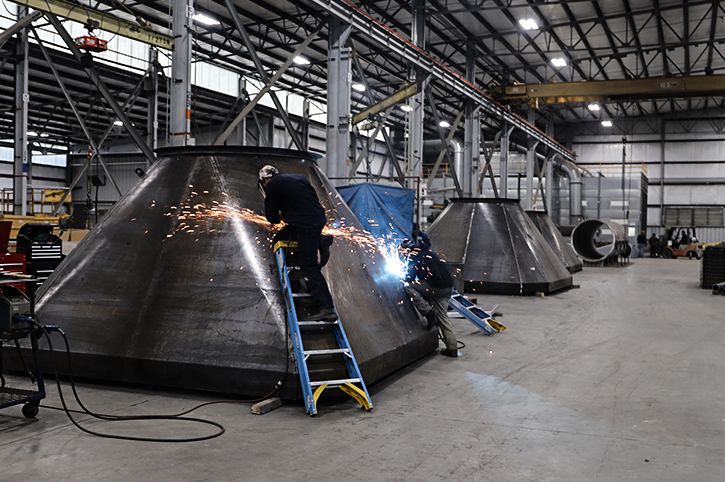Common Welding Repair Work Issues and Just How to Address Them Properly
Welding repairs commonly encounter a variety of problems that can jeopardize the honesty of the end product. Usual problems consist of poor penetration, porosity, and misalignment, to name a few. Each defect offers unique difficulties that need details strategies for resolution. Understanding these concerns is essential for welders aiming to enhance their skills and results. This discussion will certainly explore these typical welding repair service issues and efficient techniques to resolve them.
Poor Penetration
Insufficient penetration occurs when the weld steel falls short to completely fuse with the base product, causing weak joints and possible architectural failures. This problem commonly comes from not enough heat input, inaccurate electrode angle, or inappropriate welding speed. Welders might experience inadequate penetration due to a mistake of the needed specifications for a details material density or kind. Additionally, contamination on the base product's surface can impede efficient bonding, aggravating the issue. To deal with insufficient infiltration, welders must ensure suitable settings on their equipment and keep a tidy work surface. Regular evaluation of welds is suggested to determine any kind of deficiencies early, enabling prompt modifications and the avoidance of jeopardized structural honesty in welded settings up.
Porosity
Porosity is a typical flaw in bonded joints that materializes as tiny gas bubbles trapped within the weld metal. This problem can endanger the honesty of the weld, leading to decreased stamina and possible failure under tension. Montana Mobile Welding and Repair Welding. Porosity commonly emerges from contamination, wetness, or incorrect welding strategies, which allow gases to escape into the molten weld pool. To deal with porosity, welders need to assure correct surface prep work, keep a clean workplace, and utilize appropriate welding parameters. Additionally, choosing the appropriate filler material and securing gas can alleviate gas entrapment. Routine examination and testing of welds can help identify porosity early, assuring prompt restorative actions are taken, thus protecting the top quality and dependability of the bonded framework
Misalignment
Misalignment in welding can emerge from numerous aspects, including improper configuration and thermal development. Recognizing the origin is important for reliable resolution. A number of adjustment techniques are readily available to realign elements and ensure structural honesty.
Reasons for Imbalance
Welding misalignment frequently originates from a variety of underlying problems that can endanger architectural honesty. One primary reason is improper fit-up of components before welding, which can bring about voids and uneven surfaces. Variations in thermal expansion throughout the welding process can additionally result in distortion, specifically if the materials being signed up with have various coefficients of expansion. In addition, poor securing and fixturing might fall short to hold parts safely in position, resulting in movement throughout welding. Improperly conserved equipment, consisting of welding machines and tools, may introduce variances in the weld grain, further adding to misalignment. Driver error, stemming from inadequate training or experience, can additionally play a considerable duty in producing misaligned welds.

Modification Strategies Available
Resolving imbalance successfully needs a combination of corrective strategies customized to the specific concerns at hand. One usual method is the use of components or jigs to hold components in the correct position throughout welding, making certain regular alignment. Additionally, pre-heating the products can help in reducing distortion and improve fit-up. For substantial imbalance, mechanical adjustment methods, such as making use of hydraulic jacks or clamps, can be utilized to remedy the placement before welding. Post-weld heat treatment may also be necessary to alleviate stress and anxieties triggered by misalignment. Cautious examination and adjustment throughout the setup phase can prevent imbalance concerns from coming to be substantial troubles, promoting a smoother welding process and boosting total structural honesty.
Distortion
Distortion is an usual challenge in welding that can emerge from numerous aspects, consisting of unequal cooling and heating. Recognizing the causes of distortion is crucial for executing efficient prevention techniques. Addressing this concern not just enhances structural honesty but additionally enhances the general high quality of the weld.
Root causes of Distortion
When based on the intense warm of welding, products typically undertake modifications that can cause distortion. This sensation primarily develops from thermal development and contraction throughout the welding process. As the weld area heats up, the material broadens; upon cooling, it acquires, which can develop inner tensions. Additionally, irregular heating across a workpiece can worsen these anxieties, resulting in warping or bending. The sort of product additionally plays a significant role; steels with varying thermal conductivity and coefficients of expansion might respond in different ways, leading to unforeseeable distortions. Additionally, inadequate joint layout and poor fixturing can add to imbalance throughout welding, boosting the possibility of distortion. Understanding these reasons is important for effective welding repair work and prevention techniques.
Prevention Techniques
Reliable avoidance strategies for distortion during welding concentrate on controlling warm input and guaranteeing correct joint style. Preserving a regular warmth input aids to reduce thermal growth and contraction, which can lead to distortion. Utilizing methods such as pre-heating the workpiece can likewise lower the temperature slope, promoting uniform heating. Additionally, choosing proper joint layouts, such as T-joints or lap joints, can enhance security and reduce tension concentrations. Executing proper fixturing to safeguard the work surfaces in position better help in keeping alignment throughout the welding procedure. Staggered welding sequences can disperse warm more uniformly, protecting against local distortion. By applying these strategies, welders can greatly decrease the probability of distortion and improve the overall quality of their welds.
Splitting
Fracturing is a common issue encountered in welding repair services, often arising from different variables such as incorrect air conditioning prices, product choice, or poor joint preparation. The occurrence of splits can considerably compromise the stability of the weld, leading to potential failings during procedure. To address this issue, welders should first assess the source, guaranteeing that products are compatible and appropriately picked for the certain application. Additionally, controlling the air conditioning price throughout the welding procedure is necessary; quick cooling can cause stress and lead to fracturing. Correct joint layout and prep work likewise add to reducing the threat. Applying these approaches can boost weld top quality and durability, eventually decreasing the probability of breaking in ended up weldments.

Incomplete Fusion
A significant problem in welding repairs is incomplete fusion, which occurs when the weld steel does not properly bond with the try this web-site base material or previous weld passes - Welding. This defect can bring about weaknesses in the joint, potentially jeopardizing the stability of the bonded structure. Variables adding to insufficient fusion include inadequate warmth input, improper welding technique, and contamination of the surfaces being joined. To resolve this issue efficiently, welders must guarantee proper pre-weld cleaning and surface prep work, in addition to readjust their welding specifications to accomplish ample infiltration and fusion. Routine evaluation during the welding process can additionally aid determine incomplete fusion early, enabling timely rehabilitative measures to boost the total high quality of the weld
Overheating
While welding repair services can improve structural stability, overheating offers a considerable challenge that can cause product degradation. Extreme warm throughout welding can modify the mechanical homes of metals, resulting in minimized stamina, increased brittleness, and bending. This sensation is specifically critical cebora mig welder in high-stress applications where structural reliability is vital. Determining getting too hot can include aesthetic assessments for staining or distortion, as well as checking temperature level throughout the welding procedure. To mitigate the threats linked with overheating, welders should employ suitable strategies, such as regulating heat input, changing traveling rate, and using ideal filler products. Furthermore, implementing pre- and post-weld heat treatments can assist restore product residential properties and improve the total high quality of the repair, making sure lasting performance and safety.
Often Asked Concerns
What Are the Common Indicators of a Welding Flaw?

How Can I Test My Welds for Top quality?
To test welds for top quality, one can utilize visual assessments, ultrasonic testing, and radiographic methods. Each technique assures structural integrity, identifies defects, and verifies adherence to defined standards, ultimately enhancing the integrity of the bonded joints.
What Safety Safety Measures Should I Take While Welding?
When welding, one need to prioritize safety by using proper individual protective tools, guaranteeing correct ventilation, safeguarding combustible products away, maintaining a clean work area, and recognizing surroundings to avoid injuries and mishaps.
Can I Repair a Weld Without Remodeling the Entire Joint?
Repairing a weld without redoing the entire joint is possible, depending upon the damage (Montana Mobile Welding and Repair Belgrade Fabrication). Strategies such as grinding, including filler product, or using a welding procedure can effectively address certain imperfections while protecting the bordering framework
What Tools Are Necessary for Efficient Welding Fixes?
Essential tools for reliable welding fixings include a welding equipment, cable brush, mill, protective equipment, clamps, and filler materials. Each tool plays an important duty in ensuring top quality and security throughout the repair process. Porosity usually emerges from contamination, dampness, or incorrect welding methods, which allow gases to leave into the liquified weld swimming pool. Badly maintained tools, including welding equipments and tools, may present variances in the weld grain, additional contributing to imbalance. When subjected to the extreme warm of welding, materials frequently undertake adjustments that can lead to distortion. Cracking is a common problem run into in welding repairs, commonly resulting from numerous variables such as inappropriate air conditioning rates, product selection, or insufficient joint preparation. A substantial issue in welding repair work is insufficient fusion, which takes place when the weld metal does not adequately bond with the base material or previous weld passes.
Comments on “What preheat methods can do for distortion prevention in Montana Mobile Welding and Repair Fabrication”